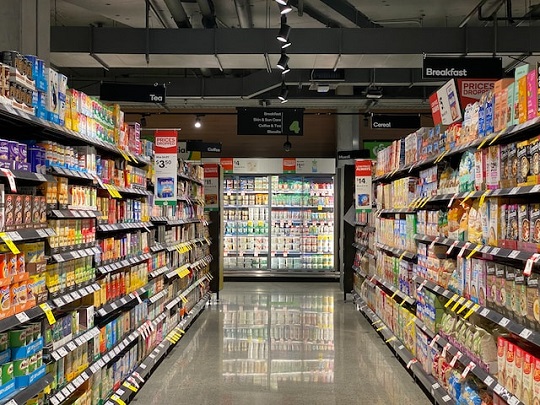In the rapidly evolving world of Fast-Moving Consumer Goods (FMCG), staying ahead of the competition requires a keen focus on responsiveness. Being able to adapt quickly to changing consumer preferences and market dynamics is paramount for success in this fast-paced industry.
In this blog post, we will delve into the significance of responsiveness in the FMCG supply chain and explore strategies that businesses can employ to enhance their ability to respond effectively.
By understanding the implications of being non-responsive and implementing the right practices, companies can establish a competitive edge, drive customer satisfaction, and achieve growth amidst the ever-changing demands of the market.
But before we delve deeper, make sure you have joined the scmguide telegram channel to receive notifications of the latest posts from this blog as well as more insights on supply chain management.
Table of Contents
The Importance of Responsiveness in the FMCG Industry
In the FMCG industry, responsiveness is a critical factor that can make or break a company’s fortunes.
Unlike other industries, FMCG products have a short shelf life and are subject to rapidly changing consumer preferences and market trends.
Consumers today are more discerning, demanding convenience, variety, and personalized experiences. They expect products to be available when and where they need them, without any delays or compromises in quality.

Failure to be sufficiently responsive in the FMCG sector can lead to several consequences.
Firstly, businesses risk losing valuable market opportunities as customers may switch to more responsive competitors who can meet their needs better. This can result in a loss of market share and potential revenue.
Moreover, non-responsiveness can undermine a company’s competitive position, allowing more agile rivals to seize market share and gain a competitive advantage.
Additionally, inadequate response to demand fluctuations can result in inventory shortages or excesses, leading to lost sales, dissatisfied customers, and financial losses.
You might also like:
- Unlocking Competitive Advantage: The Power of Leveraging Supplier Relationships
- No One-Size-Fits-All Solution in Supply Chain: Why Every Company is Unique
Enhancing Responsiveness in the FMCG Supply Chain
To mitigate the negative impacts of changing consumer preferences, FMCG companies can adopt several strategies to become more responsive.
Strengthen Collaboration in the Supply Chain
Building strong relationships with suppliers, manufacturers, distributors, and retailers, and improving communication and information exchange within the supply chain can enable faster responses to market changes.
Collaboration ensures better coordination, timely adjustments, and improved decision-making throughout the supply chain, facilitating faster response times.
Improve Planning and Forecasting Systems
Accurate and effective planning and forecasting methods are essential for FMCG companies to anticipate and respond to demand changes.
Gathering relevant data, analyzing market trends, and utilizing predictive analytics can enhance forecasting accuracy.
By understanding market dynamics and consumer behavior, companies can proactively adjust production levels, inventory management, and distribution strategies to align with shifting demands.
Optimize Operational Flexibility
Developing operational flexibility within production, distribution, and the overall supply chain enables companies to respond quickly to changes in consumer preferences.
This can be achieved through the utilization of technology-enabled agile manufacturing processes, reduction of cycle times, and the implementation of flexible production strategies that allow for quick product adjustments and customization.
Adopt Innovation and Technology
Leveraging relevant technologies and innovation to improve speed and efficiency in operational processes can enhance responsiveness in the FMCG industry.
This includes adopting integrated supply chain management systems, process automation, real-time data analytics, and advanced information systems.
Cultivate a Culture of Responsiveness
Establishing a culture of responsiveness across the organization is crucial.
This involves educating and involving employees in swift decision-making, empowering them to take appropriate actions, and fostering adaptability and flexibility within teams.
Encouraging a customer-centric mindset and continuous improvement can drive responsiveness at all levels of the organization.
You might also like:
- Prioritizing Your Efforts: Don’t Get Overwhelmed with Supply Chain Management
- Mastering the Game of Supply Chain Management: Think Like a Chess Player
Measuring Responsiveness: Key Performance Indicators (KPIs)
Measuring responsiveness necessitates the use of Key Performance Indicators (KPIs) that provide insights into a company’s ability to respond quickly to market changes and consumer demands.
Some relevant KPIs for measuring responsiveness in the FMCG industry include.
Lead Time Responsiveness
Measures the time taken to respond to changes in demand or customer orders.
It compares the time taken to initiate responsive actions, such as starting production or delivering orders, with the time required to complete those actions.
On-Time Delivery
Evaluates the company’s ability to deliver orders to customers within the promised timeframe. High on-time delivery rates indicate good responsiveness in meeting customer expectations.
Time to Market
Measures the time required to launch new products or introduce changes to existing products. A shorter time to market signifies responsiveness in addressing market trends and consumer demands.
Fill Rate
Assesses the percentage of customer orders that can be fulfilled entirely in a single shipment. A higher fill rate indicates better responsiveness in meeting customer demand with sufficient inventory and timely delivery.
Time to Changeover
Measures the time taken to switch from one product to another in the production process. A shorter changeover time signifies responsiveness in adapting to changing product demands.
Customer Satisfaction
Gauges customer satisfaction levels regarding the company’s responsiveness. This can be measured through customer surveys, feedback, and retention rates. High levels of customer satisfaction indicate effective responsiveness to customer needs and preferences.
Conclusion
In the FMCG industry, responsiveness is crucial for companies aiming to thrive in a fast-paced market.
By understanding the importance of responsiveness, the consequences of non-responsiveness, and implementing strategies to enhance responsiveness, businesses can effectively navigate changing consumer preferences and market dynamics.
Strengthening collaboration in the supply chain, improving planning and forecasting, optimizing operational flexibility, adopting innovation and technology, and cultivating a culture of responsiveness are key steps towards becoming a more agile and responsive FMCG company.
Moreover, measuring responsiveness through appropriate KPIs provides companies with valuable insights and benchmarks to evaluate their performance. Regular monitoring of these indicators allows organizations to identify areas for improvement and make data-driven decisions to enhance responsiveness.
By prioritizing responsiveness, FMCG companies can not only stay ahead of the competition but also foster stronger customer relationships, achieve market success, and drive sustained growth in today’s dynamic consumer-driven marketplace.
Hope it is useful!
Please also share this article with your colleagues so that they can benefit from it as well. Join our scmguide telegram channel to receive notifications of the latest posts from this blog and gain more insights into supply chain management. All articles on this blog are free for you to use for any purpose, including commercial, without the need for attribution.

 by
by 

